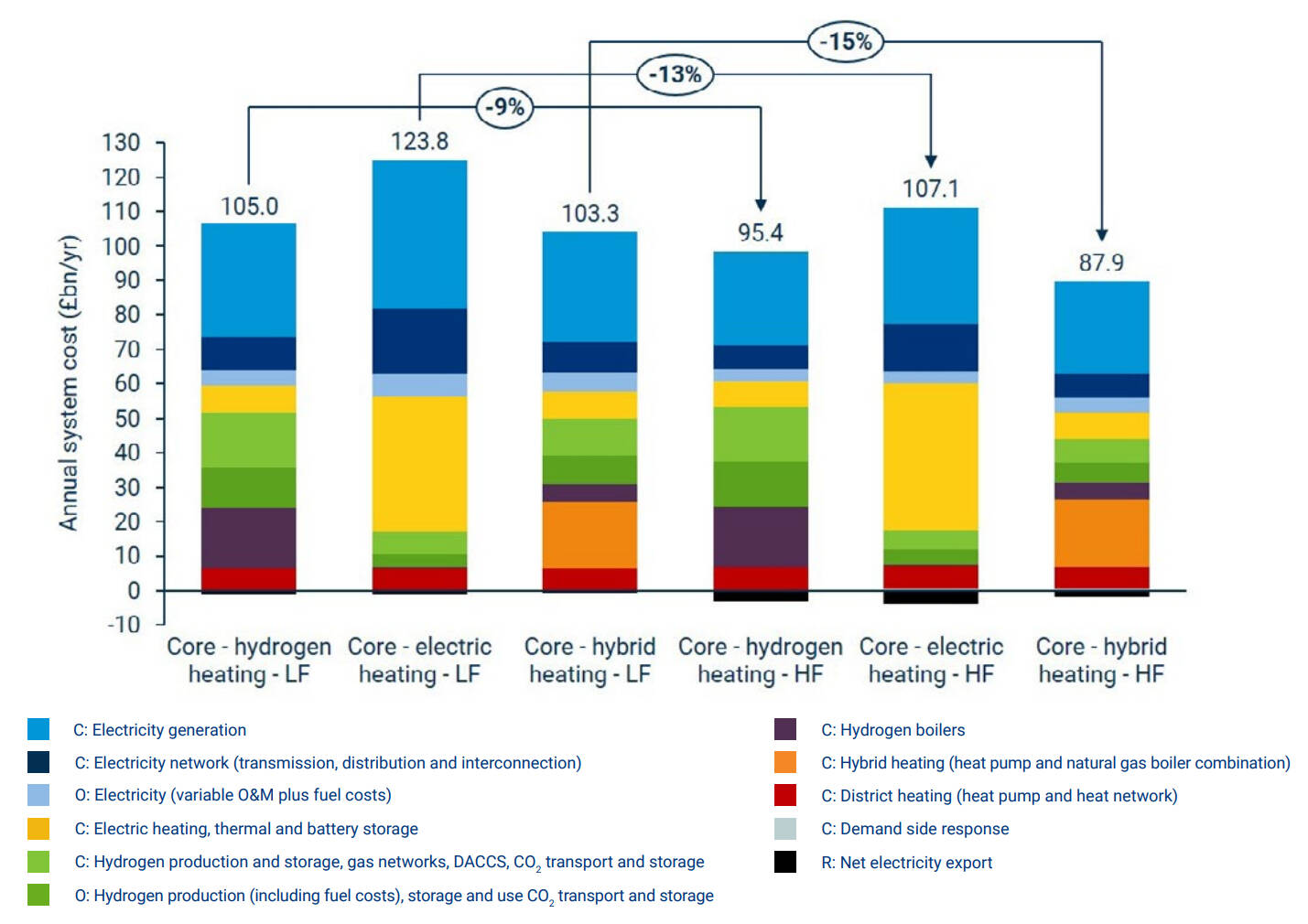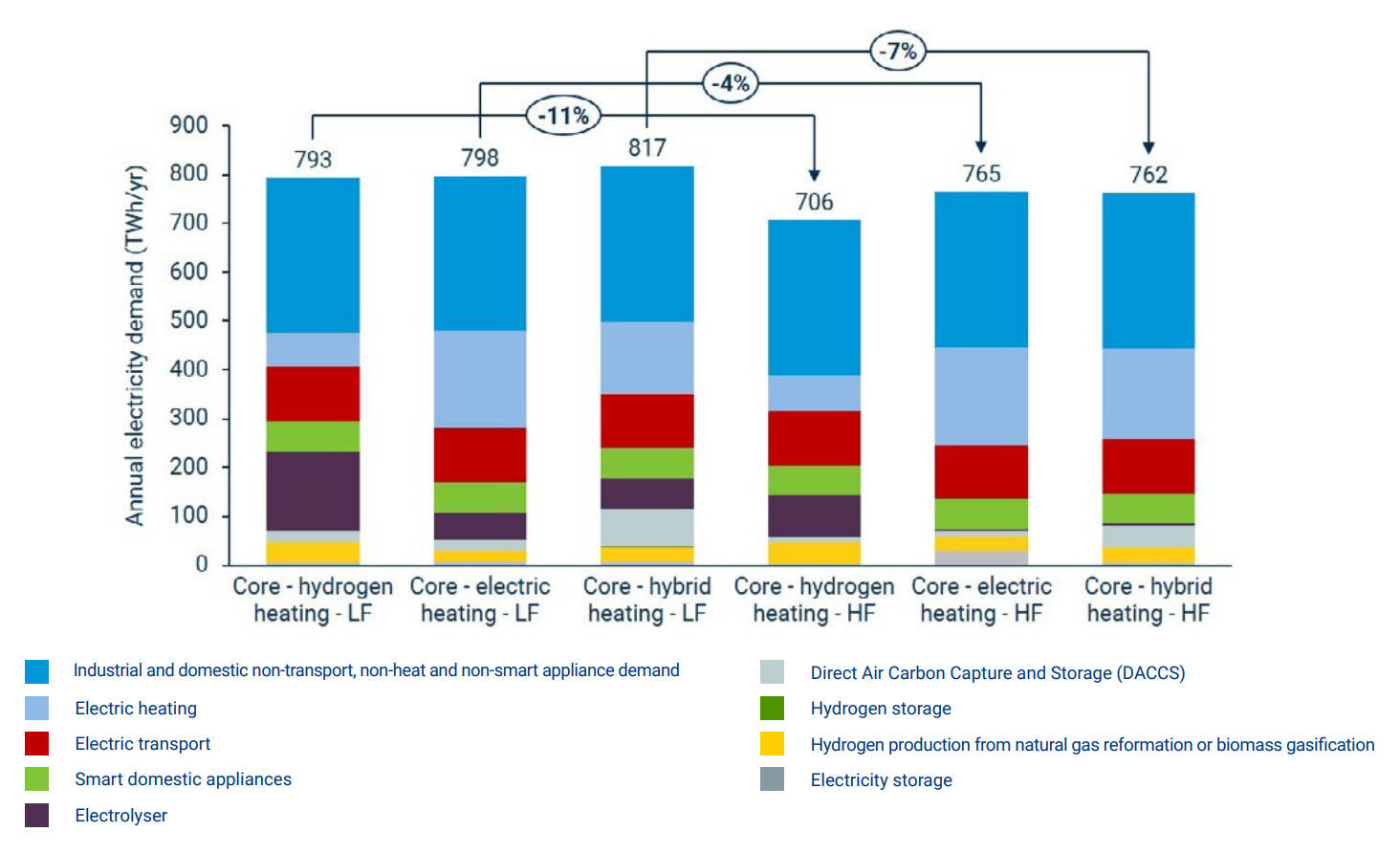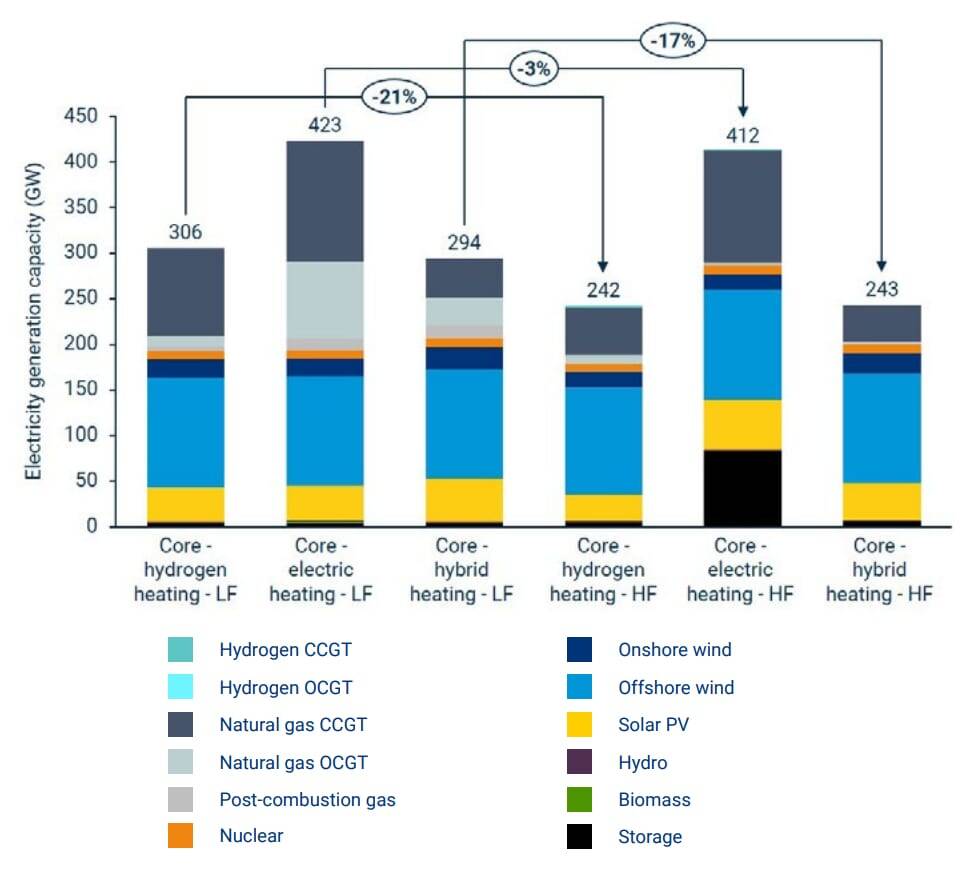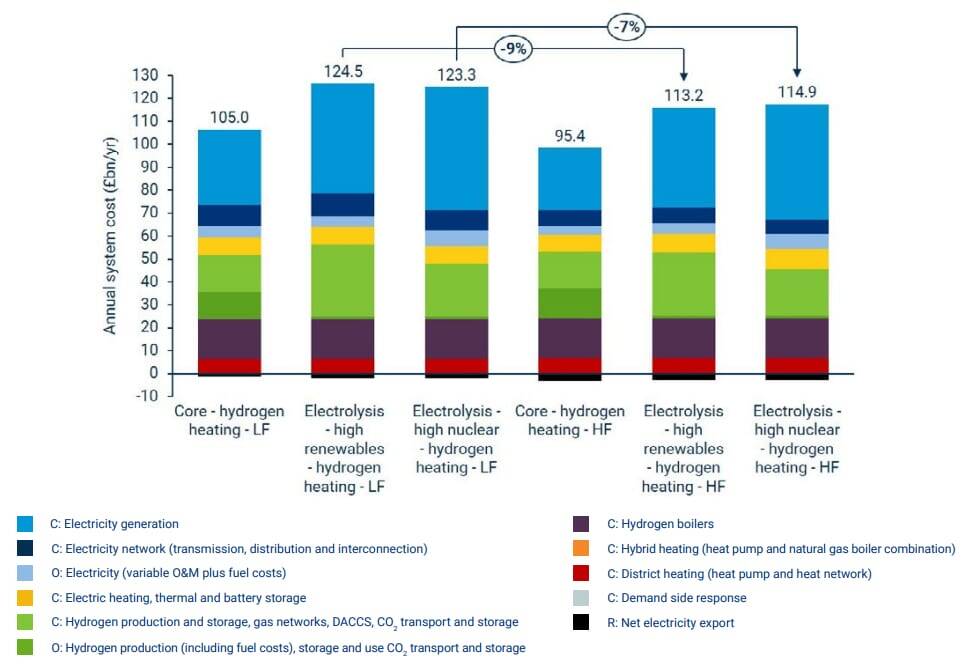You’ve reached your limit!
To continue enjoying Utility Week Innovate, brought to you in association with Utility Week Live or gain unlimited Utility Week site access choose the option that applies to you below:
Register to access Utility Week Innovate
- Get the latest insight on frontline business challenges
- Receive specialist sector newsletters to keep you informed
- Access our Utility Week Innovate content for free
- Join us in bringing collaborative innovation to life at Utility Week Live

Greater flexibility could cut energy system costs by £16.7 billion per year by 2050, according to new research from the Carbon Trust and Imperial College London.
The report said flexibility should be embedded into all sectors of the energy system – power, heat and transport – to reduce the impact and cost of their decarbonisation.
The findings are based on modelling of three core pathways for achieving net zero emissions by 2050 as well as a number of additional scenarios and sensitivities. The core pathways are characterised by their solutions to the decarbonisation of heat.
Heat networks supplied by ground-source and water source heat pumps meet 20 per cent of heat demand in all three of the core pathways. However, in the hydrogen heating pathway the majority of the rest is met by hydrogen boilers, whilst in the electric heating pathway nearly all of the remainder is met by small heat pumps.
Meanwhile, in the hybrid heating pathway, the majority of remaining demand is met by small heat pumps. The rest is met by unabated natural gas boilers, with their emissions being offset using direct air carbon capture and storage and bioenergy with carbon capture and storage.
For all three core pathways, the report modelled a low flexibility scenario, in which battery storage and interconnector capacity hold steady at 1.1GW and 11.7GW respectively, there is no demand-side response and thermal energy storage remains limited; and a high flexibility scenario, in which there are much greater amounts thermal and battery storage, interconnector capacity rises to 20GW and there is widespread demand-side response from various sources.
Annual heat demand

The report identified the hybrid heating pathway as having the lowest annual system costs in both the low flexibility and high flexibility scenarios at £103.3 billion and £87.9 billion respectively. In this pathway, greater flexibility would reduce annual system costs by 15 per cent or £15.4 billion.
The electric heating pathway was identified as the most expensive, with annual system costs of £123.8 billion in the low flexibility scenario and £107.1 billion in the high flexibility scenario. The annual savings from enhanced flexibility would be proportionally lower at 13 per cent but the highest in nominal terms at £16.7 billion.
Annual systems costs in the hydrogen heating pathway would amount to £105 billion in the low flexibility scenario and £95.4 billion in the high flexibility scenario. This pathway would see the lowest annual savings from flexibility, both proportionally and in nominal terms at 9 per cent or £9.6 billion.
Annual system costs

The modelling suggested annual electricity demand would rise by more than two and half times in all three of the low flexibility scenarios but would be substantially lower in the high flexibility scenarios, in particular in the electric heating pathway.
Annual electricity demand

The deployment of renewables would also be fairly similar across all three core pathways. However, the electric heating scenario would require much more backup generation and storage to meet peaks in demand during extended periods of low wind and solar output. Along with the requirement for more extensive electricity network reinforcement, this is the main reason for the higher annual costs in the electric heating pathway when compared to the others, as well as the lower costs in the high flexibility scenarios.
Electricity generation and storage capacity

In the hydrogen heating pathway, the majority of hydrogen is so-called blue hydrogen produced by reforming methane and capturing emissions. There is also a significant amount of green hydrogen produced by electrolysing water as well as hydrogen produced through the gasification of biomass, again with the emissions being captured and stored.
The study additionally explored a sensitivity in which all hydrogen is produced using electrolysis, powered by either renewable or nuclear generation. The analysis found this would substantially increase annual energy system costs, bringing them much closer in line with the electric heating pathway in both the low and high flexibility scenarios.
Annual system costs under different hydrogen production scenarios

The report authors highlighted the substantial value of flexibility across all of the numerous scenarios it explored, describing it as a “no regrets” option and calling for it to be treated as a “core infrastructure challenge”.
They said policymakers should seek to preserve existing sources of flexibility such as hot water tanks in homes and act now to maximise future flexibility, for example, by embedding it into smart appliances and building standards. They said consumer engagement and confidence will be critical to scaling up deployment, which will require business models that capture its value and overcome acceptance challenges.
Carbon Trust chief executive Tom Delay said: “Flexibility is vital to unlock value and it is the most important ‘no regrets’ action that can be taken as the UK moves to decarbonise heat, transport and industry, saving billions in investment and operating costs.
“It’s critically important that industry, business, consumers and the public sector understand the value of flexibility and the benefits that flexibility brings to the British economy. Flexibility always delivers – we should invest in it now.”
Baroness Brown of Cambridge, the trust’s chair, commented: “This in-depth analysis examines the different uncertainties the net zero transition throws up and offers a comprehensive evidence base on the role and value of energy system flexibility under different energy system futures.
“The report demonstrates that energy flexibility can reduce the cost of meeting net zero and mitigate the impact of wider changes in the energy system, ensuring we reach net zero efficiently, effectively and at lowest cost.”
The report was funded by a consortium of project partners including EDF, UK Power Networks, Scottish and Southern Electricity Networks, SP Energy Networks, Western Power Distribution, Kiwi Power, the Institution of Gas Engineers and Managers, Bryt Energy and Statera Energy, all of which provided input to the report.
Input was also provided by Ofgem, the Department for Business, Energy and Industrial Strategy, the Climate Change Committee and National Grid Electricity System Operator, among others.




Please login or Register to leave a comment.